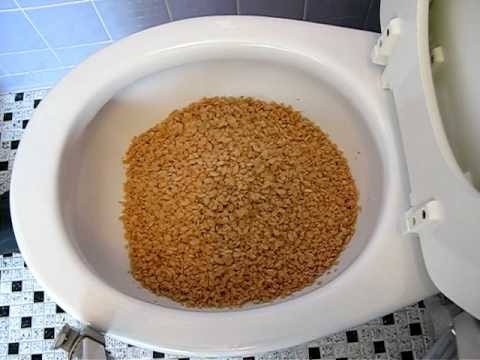Is it Prudent to Flush Food in the Toilet?
Is it Prudent to Flush Food in the Toilet?
Blog Article
How do you feel about What Can Happen If You Flush Food Down the Toilet??

Intro
Many people are frequently confronted with the problem of what to do with food waste, specifically when it involves leftovers or scraps. One common question that arises is whether it's okay to purge food down the bathroom. In this post, we'll delve into the reasons that people could take into consideration purging food, the repercussions of doing so, and alternative techniques for appropriate disposal.
Reasons that individuals might think about purging food
Lack of recognition
Some individuals might not understand the potential damage caused by flushing food down the commode. They might incorrectly believe that it's a harmless technique.
Comfort
Purging food down the bathroom might appear like a fast and very easy solution to throwing away undesirable scraps, specifically when there's no close-by garbage can readily available.
Negligence
In some cases, individuals might simply select to flush food out of sheer idleness, without taking into consideration the effects of their actions.
Consequences of flushing food down the commode
Environmental impact
Food waste that ends up in waterways can contribute to air pollution and damage marine environments. In addition, the water utilized to flush food can strain water sources.
Pipes issues
Purging food can cause stopped up pipes and drains, creating costly pipes repairs and inconveniences.
Types of food that should not be flushed
Fibrous foods
Foods with coarse structures such as celery or corn husks can obtain tangled in pipelines and cause clogs.
Starchy foods
Starchy foods like pasta and rice can soak up water and swell, causing clogs in pipes.
Oils and fats
Greasy foods like bacon or food preparation oils need to never ever be purged down the bathroom as they can solidify and create obstructions.
Correct disposal methods for food waste
Making use of a waste disposal unit
For homes outfitted with garbage disposals, food scraps can be ground up and purged with the plumbing system. Nevertheless, not all foods are suitable for disposal in this fashion.
Recycling
Particular food packaging materials can be recycled, decreasing waste and lessening environmental effect.
Composting
Composting is a green method to take care of food waste. Organic materials can be composted and used to enhance dirt for gardening.
The importance of correct waste monitoring
Reducing ecological injury
Correct waste administration practices, such as composting and recycling, help decrease air pollution and preserve natural deposits for future generations.
Safeguarding plumbing systems
By staying clear of the technique of flushing food down the bathroom, homeowners can stop costly pipes fixings and keep the honesty of their plumbing systems.
Conclusion
To conclude, while it may be appealing to purge food down the commode for ease, it's important to comprehend the prospective repercussions of this action. By embracing correct waste management techniques and taking care of food waste sensibly, individuals can contribute to much healthier pipes systems and a cleaner setting for all.
FLUSH FOOD DOWN THE TOILET?
FLUSHING FOOD CAN CAUSE BLOCKED DRAINS IN YOUR HOME
All of the plumbing fixtures in your home are connected to the same sewer pipe outside of your home. This outdoor sewer pipe is responsible for transporting all the wastewater from your home to the Council sewer mains. Even small pieces of food that go down the kitchen sink can cause problems for your sewer. It should therefore be obvious that flushing larger bits of food, such as meat, risks a clog in either the toilet itself or the sewer pipes. Flushing greasy food is even more problematic because oil coagulates when it cools, coating the interior lining of your pipes.
THE TOILET IS NOT A BIN
Food isn’t the only thing that people shouldn’t be flushing down the toilet. People use the toilet to dispose of all kinds of things such as tampons, makeup wipes, dental floss, kitty litter and even underwear. Water goes to great lengths to educate residents about the high costs and stress placed on wastewater treatment systems simply from people flushing the wrong stuff down the toilet. It costs taxpayers millions of dollars each year, and homeowners thousands in blocked drain repairs.
FLUSHING FOOD IS A WASTE OF WATER
Flushing food is a waste of our most precious resource - water. In June this year Level 1 water restrictions were introduced to protect water supply from drought conditions. Much of New South Wales continues to be affected by prolonged drought with recent figures revealing up to 97 per cent of the state remains in drought. Depending on whether you have a single or dual flush toilet, every single flush uses between five and 11 litres of water. In the current climate this is a huge amount of water to be wasting on flushing food that should be placed in the bin (or better yet, the compost).
https://www.jabplumbingsolutions.com.au/blog/can-you-flush-food-down-the-toilet

We were guided to that editorial about What Can Happen If You Flush Food Down the Toilet? from an associate on our other web page. In case you liked our blog entry kindly don't forget to pass it around. I cherish reading our article about Flushing Food Down the Toilet?.
Instant Quote Report this page